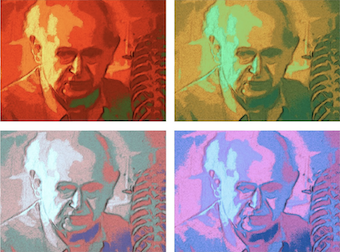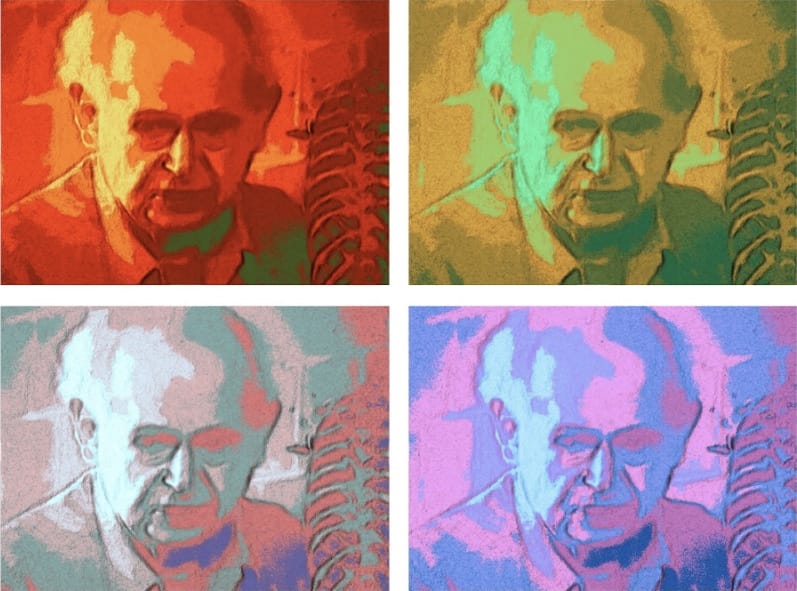
Not the same way all the time

Variety’s the very spice of life,
that gives it all its flavour.
― William Cowper
Thirty-seven minutes and 27 seconds.
Thirty-seven minutes and 27 seconds into the 25th session of his 1972 course, Moshe Feldenkrais utters, “The teaching shouldn’t be done all the time in the same way.”
The reason I know the precise moment he made this declaration is because I had to replay the audio recording several times to ensure I heard him correctly. I wanted to make sure I’d heard him correctly. I had never read or heard him offer this advice elsewhere, let alone state it in such a plain-spoken, emphatic manner.
Dr. Feldenkrais was teaching what has become known as The Esalen Workshop. As I mentioned elsewhere, the title downplays the significance of this six-week seminar. Rather than simply being a more extended version of the many public workshops he taught around the world, this program was Moshe’s first-ever go at preparing others to teach his unique — and uniquely transformative — group classes. [Indeed, it was during this Esalen course that his foundational approach to somatic education was named Awareness Through Movement (ATM).]
He wasn’t leading a group of students; instead, he was preparing future teachers. Rather than guiding the participants through ATM classes, he regularly interjected comments about observing and understanding students and offered guidance about teaching and understanding the lessons. In many ways, he was much more candid and forthcoming than in later years.
Among the more than 1,200 recorded and written classes comprising Feldenkrais’ collected works, many versions exist of what we now consider classic lessons. Some variants contain minor changes, but most of the compositions expand on familiar themes, explore alternative pathways, and often, though not always, lead in new, unexpected directions. Moshe’s proclamation at Esalen proves that these divergences were intentional rather than incidental.
Unlike nearly all the moving arts and sciences, Feldenkrais’ approach is not based on rehearsing and refining a limited movement repertoire. Instead, the vast collection of lessons he created explores an expansive and diverse vocabulary of positions, motions, and gestures in various configurations, combinations, and contexts. What’s more, it leaves the door open to future development.
When, on that fateful day, he goes on to say that “there should be no routine anywhere for a human brain,” Moshe makes it clear that variety isn’t solely the spice of life; variety is also the spice of learning.
To create today’s photo, I had to resuscitate my original Pixel XL phone (circa 2016). That was the only way to access the now-defunct Paper Camera app and use its “Ändy Pop” (as in Andy Warhol) filter.
Your thoughts?
Please let us know your perspective! Add your comments, reactions, suggestions, ideas, etc., by first logging in to your Mind in Motion account and then clicking here.
Commenting is only available to the Mind in Motion Online community.
Join in by getting your free account, which gives you access to the e-book edition of Articulating Changes (Larry's now-classic Master's thesis), ATM® lessons, and more — all at no charge whatsoever.
To find out more and sign up, please click here.
Please share this blog post
 This work is licensed under a Creative Commons Attribution-ShareAlike 4.0 International License
This work is licensed under a Creative Commons Attribution-ShareAlike 4.0 International License
This blog may contain one or more affiliate links. When you click on a link and then make a purchase, Mind in Motion receives a payment. Please note that we only link to products we believe in and services that we support. You can learn more about how affiliate links work and why we use them here


“there should be no routine anywhere for the human brain.” That’s what I like!
Thanks, Natala –
This makes sense in terms of teaching, but it misses the importance of habits, which aren’t mistakes but, instead, are the sign of successful learning.
Ha! I like that you revived old tech for cool tools:) And a nice reminder of how integrating it is to illustrate an idea with images as well as words:)
Thanks, Moira, on both counts!
I saw the Andy Warhol image in mind while writing the post. I tried to create the same effect using AI, but couldn’t. That’s why I went to my old phone, which, thankfully, was still working.
Thanks for this Larry. To me, “doing an ATM lesson” has always appeared incongruent with the idea of better finding your own way and spontaneity. Even if a lesson is very cleverly pointing to something, what is still primary is what it points to, not how it does the pointing, or ?
Hello Frank –
What a lesson points to and how it does the pointing are related to each other, though they do not have a fixed, one-to-one relationship.
The what – the red thread, underlying function, or pattern – underlying the lesson can be approached – or revealed – in many ways. That’s why there can be many approaches to and variations of the same lesson.
Certainly, the student can find their own way, as long as they respect the constraints. Otherwise, they can stray from the what the lesson is leading to and never find it.
Didn’t mean to suggest to not engage with “the lesson”. If you were not relate do what is suggested at all, you’d probably miss everything. And then why do it ?
I was assuming that what this says about teaching is not only a consideration about teaching, but has to do with the individual process. Which, as I understand it, is also not based on rehearsing and refining ‘good movements’, but about exploring oneself, about building a vocabulary, and about finding more ways to spontaneously express oneself. So it would make sense to me that a teacher would model variation and exploration rather then rehearsal. Something like that.
Thanks for clarifying, Frank. Yes, it does make sense that the teacher model variation and exploration!
Thanks Larry! Enjoy a peaceful winter Solstice. BonnieK
Thank you, Bonnie!
May the spirit of the season bring light to these dark days.
I like it because it covers all the things that COULD go wrong with our brain!
Ah!